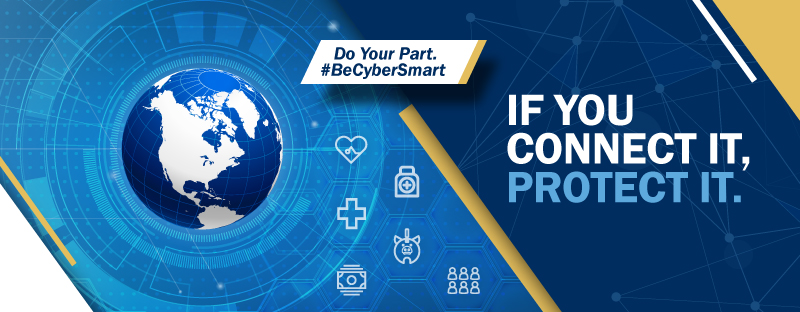Cybersecurity Awareness Month: Securing Devices at Home and Work
Cybersecurity Awareness Month: Securing Devices at Home and Work

2020 saw a major disruption in the way many work, learn, and socialize online. Our homes are more connected than ever. Our businesses are more connected than ever.
With more people now working from home, these two internet-connected environments are colliding on a scale we’ve never seen before, introducing a whole new set of potential vulnerabilities that users must be conscious of. Week 2 of Cybersecurity Awareness Month focuses on steps users and organizations can take to protect internet-connected devices for both personal and professional use.
Did You Know?
- The global smart home market is forecast to reach a value of more than $141 billion by 2023. (Statista Research)
- 92% of employees said they believe it’s the organization’s job to secure remote working, yet over two-fifths (42%) claimed current security policies make it difficult to do their job. (Capita)
- 90% of IT professionals believe remote workers are not secure and 70% think remote staff poses a greater risk than onsite employees. (OpenVPN)
"... make sure you understand your organization’s telework policies and procedures. If your organization provides a VPN (virtual private network) for connecting into your work network, use that for stronger protection. If not, consider finding and using a reputable VPN (there are numerous available online) when conducting work-related activities. If you’re using a computer issued by your organization, hopefully it’s already configured securely and updated regularly, which can go a long way. However, if accessing work from your own computer, be sure to implement some basic security measures like using strong authentication (for example, passwords, PINs, or fingerprint or facial recognition), installing an anti-virus program on your Microsoft Windows computer (and keeping it updated!), and keeping up with the latest updates for your operating system and applications, especially those that fix security issues (enabling automatic updates if possible really helps). When using a wireless connection (Wi-Fi) on your home network, be sure to use WPA2/WPA3 for stronger protection and set a Wi-Fi password that is not easily guessable (NIST, 2020)."
The NIST website is a great resource for those working on securing their networks, You can read more from Haney on this issue here.
Also check out this blog from Health IT Answers for advice from industry experts on securing devices at work and at home. And don't forget to visit our member directory to find local businesses, like DataPrivia, who can help!
______________________________________________
DataPrivia was established on a foundation of Cyber Security but has developed additional technical teams focused on Advanced Technology Services and helping organizations meet Compliance Mandates. We do ALL THINGS technology.

